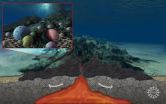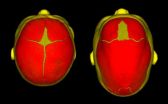(Press-News.org) New research on posttraumatic stress disorder (PTSD) in soldiers challenges popular assumptions about the origins and trajectory of PTSD, providing evidence that traumatic experiences in childhood - not combat - may predict which soldiers develop the disorder.
Psychological scientist Dorthe Berntsen of Aarhus University in Denmark and a team of Danish and American researchers wanted to understand why some soldiers develop PTSD but others don't. They also wanted to develop a clearer understanding of how the symptoms of the disorder progress.
"Most studies on PTSD in soldiers following service in war zones do not include measures of PTSD symptoms prior to deployment and thus suffer from a baseline problem. Only a few studies have examined pre- to post-deployment changes in PTSD symptoms, and most only use a single before-and-after measure," says Berntsen.
The team aimed to address these methodological issues by studying a group of 746 Danish soldiers and evaluating their symptoms of PTSD at five different timepoints. Their study is published in Psychological Science, a journal of the Association for Psychological Science.
Five weeks before the soldiers were scheduled to leave for Afghanistan, they completed a battery of tests including a PTSD inventory and a test for depression. They also completed a questionnaire about traumatic life events, including childhood experiences of family violence, physical punishment, and spousal abuse.
During their deployment, the soldiers completed measures related to the direct experience of war: perceptions of war zone stress, actual life-threatening war experiences, battlefield wounds, and the experience of actually killing an enemy.
The researchers continued to follow the soldiers after their return home to Denmark, assessing them a couple weeks after their return, two to four months after their return, and seven to eight months after their return.
What Berntsen and her colleagues found challenges several widely held assumptions about the nature of PTSD.
Rather than following some sort of "typical" pattern in which symptoms emerge soon after a particularly traumatic event and persist over time, Berntsen and colleagues found wide variation in the development of PTSD among the soldiers.
The vast majority of the soldiers (84%) were resilient, showing no PTSD symptoms at all or recovering quickly from mild symptoms.
The rest of the soldiers showed distinct and unexpected patterns of symptoms. About 4% showed evidence of "new-onset" trajectory, with symptoms starting low and showing a marked increase across the five timepoints. Their symptoms did not appear to follow any specific traumatic event.
Most notably, about 13% of the soldiers in the study actually showed temporary improvement in symptoms during deployment. These soldiers reported significant symptoms of stress prior to leaving for Afghanistan that seemed to ease in the first months of deployment only to increase again upon their return home.
What could account for this unexpected pattern of symptoms?
Compared to the resilient soldiers, the soldiers who developed PTSD were much more likely to have suffered emotional problems and traumatic events prior to deployment. Childhood experiences of violence, especially punishment severe enough to cause bruises, cuts, burns, and broken bones actually predicted the onset of PTSD in these soldiers. Those who showed symptoms of PTSD were more likely to have witnessed family violence, and to have experienced physical attacks, stalking or death threats by a spouse. They were also more likely to have past experiences that they could not, or would not, talk about. And they were less educated than the resilient soldiers.
According to Berntsen and colleages, all of these factors together suggest that army life - despite the fact that it involved combat – offered more in the way of social support and life satisfaction than these particular soldiers had at home. The mental health benefits of being valued and experiencing camaraderie thus diminished when the soldiers had to return to civilian life.
The findings challenge the notion that exposure to combat and other war atrocities is the main cause of PTSD.
"We were surprised that stressful experiences during childhood seemed to play such a central role in discriminating the resilient versus non-resilient groups," says Berntsen. "These results should make psychologists question prevailing assumptions about PTSD and its development."
###This research was funded by the Danish National Research Foundation, the Danish Council for Independent Research: Humanities, the Royal Danish Defense College, and National Institutes of Health Grant No. R01MH066079.
For more information about this study, please contact: Dorthe Berntsen at dorthe@psy.au.dk.
The APS journal Psychological Science is the highest ranked empirical journal in psychology. For a copy of the article "Peace and War: Trajectories of Posttraumatic Stress Disorder Symptoms Before, During, and After Military Deployment in Afghanistan" and access to other Psychological Science research findings, please contact Anna Mikulak at 202-293-9300 or amikulak@psychologicalscience.org.
Embattled childhoods may be the real trauma for soldiers with PTSD
2012-11-20
ELSE PRESS RELEASES FROM THIS DATE:
Rice unveils super-efficient solar-energy technology
2012-11-20
HOUSTON -- (Nov. 19, 2012) -- Rice University scientists have unveiled a revolutionary new technology that uses nanoparticles to convert solar energy directly into steam. The new "solar steam" method from Rice's Laboratory for Nanophotonics (LANP) is so effective it can even produce steam from icy cold water.
Details of the solar steam method were published online today in ACS Nano. The technology has an overall energy efficiency of 24 percent. Photovoltaic solar panels, by comparison, typically have an overall energy efficiency around 15 percent. However, the inventors ...
Network's 'it takes a village' approach improves dementia care and informs research, study shows
2012-11-20
INDIANAPOLIS -- The approach of the Indianapolis Discovery Network for Dementia -- with contributions from family members, community advocates, health care systems and researchers -- improves dementia care and informs dementia research, according to a new study by researchers from the Regenstrief Institute and the Indiana University Center for Aging Research.
"Collaborative dementia care -- sensitive to local needs and concerns -- combines human interaction of all those involved plus technology. Regular face-to-face meetings of caregivers, clinicians and researchers provide ...
1 week at a health spa improves your health, study shows
2012-11-20
(PHILADELPHIA) – Take off those Thanksgiving pounds with a week at a spa retreat. A new study shows that not only are they relaxing and nourishing, but they are safe and a week-long spa stay can correspond with changes in our physical and emotional well-being.
New research from Thomas Jefferson University Hospital evaluated 15 participants before and after their visit to We Care Spa, a health and wellness spa in Desert Hot Springs California, and found the program safe and helped to improve the participants' health. Their complete findings will be available in the ...
New energy technologies promise brighter future
2012-11-20
TAMPA, Fla. (Nov. 19, 2012) – In three studies published in the current issue of Technology and Innovation – Proceedings of the National Academy of Inventors®, innovators unveil creative technologies that could change our sources of energy, change our use of energy, and change our lives.
Untapped energy in the oceans
The kinetic energy in the Florida Current and in Florida's ocean waves can be captured and used, said Howard P. Hanson of the Southeast National Marine Renewable Energy Center at Florida Atlantic University.
"Capturing the kinetic energy of the Florida ...
Lava dots: Rice makes hollow, soft-shelled quantum dots
2012-11-20
HOUSTON -- (Nov. 19, 2012) -- Serendipity proved to be a key ingredient for the latest nanoparticles discovered at Rice University. The new "lava dot" particles were discovered accidentally when researchers stumbled upon a way of using molten droplets of metal salt to make hollow, coated versions of a nanotech staple called quantum dots.
The results appear online this week in the journal Nanotechnology. The researchers also found that lava dots arrange themselves in evenly spaced patterns on flat surfaces, thanks in part to a soft outer coating that can alter its shape ...
Kessler Foundation researchers predict hidden epidemic of neurological disability for India
2012-11-20
West Orange, NJ. November 19, 2012. The 'Global Perspectives' published in the Nov. 20, 2012 issue of Neurology®, the medical journal of the American Academy of Neurology, features "Neurologic Disability: A Hidden Epidemic for India". The authors, a team of US and Indian scientists, detail three emerging trends contributing to this public heath problem and outline measures to stem its growth. Abhijit Das, MD, DM, Amanda Botticello, PhD, MPH, and Glenn Wylie, DPhil, are researchers at Kessler Foundation in West Orange, New Jersey. Kurupath Radhakrishnan, MD, DM, FAAN, is ...
Yeast protein breaks up amyloid fibrils and disease protein clumps differently
2012-11-20
PHILADELPHIA — Several fatal brain disorders, including Parkinson's disease, are connected by the misfolding of specific proteins into disordered clumps and stable, insoluble fibrils called amyloid. Amyloid fibrils are hard to break up due to their stable, ordered structure. For example, α-synuclein forms amyloid fibrils that accumulate in Lewy Bodies in Parkinson's disease. By contrast, protein clumps that accumulate in response to environmental stress, such as heat shock, possess a less stable, disordered architecture.
Hsp104, an enzyme from yeast, breaks up both ...
New study review examines benefits of music therapy for surgery patients
2012-11-20
LEXINGTON, Ky. (Nov. 19, 2012) — A new study review published by the University of Kentucky found that music therapy can be beneficial to patients before, during and after a surgical procedure and may reduce pain and recovery time.
Published in the Southern Medical Journal, the review examined the use of music in the preoperative, intraoperative and postoperative stages of the surgical process, and music was shown to have positive results in all three stages. Patients were less anxious before the procedure and recovered more quickly and satisfactorily after by being exposed ...
'Dark Energy': Life beneath the seafloor discussed at upcoming American Geophysical Union conference
2012-11-20
"Who in his wildest dreams could have imagined that, beneath the crust of our Earth, there could exist a real ocean...a sea that has given shelter to species unknown?"
So wrote Jules Verne almost 150 years ago in A Journey to the Center of the Earth. Verne probably couldn't have imagined the diversity of life that researchers observe today under the ocean floor.
Scientists affiliated with the National Science Foundation (NSF) Center for Dark Energy Biosphere Investigations (C-DEBI) will discuss recent progress in understanding life beneath the seafloor at the American ...
Seattle Children's Research Institute helps identify causes of sagittal craniosynostosis
2012-11-20
Seattle Children's Research Institute, together with an international team of scientists and clinicians from 22 other institutions, have identified two genetic risk factors for the most common form of non-syndromic craniosynostosis, a birth defect in which the bony plates of an infant's skull prematurely fuse. The condition is known as sagittal craniosynostosis and often results in an abnormal head shape and facial features.
The study identified two genes (BMP2 and BBS9) associated with sagittal craniosynostosis that are known to be involved in broader skeletal development.
Results ...





